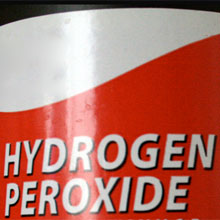
Recently, a leading online news portal reported that the industrial hydrogen peroxide market is predicted to reach an amount of US $4.28 billion by the year 2026, at a CAGR of 5.53% from the year 2016 to 2026.
Do you know for the fact that the industrial hydrogen peroxide is even utilized in the bleaching of paper as well? Yes, the bleaching process – making your paper white can be done by utilizing the Hydrogen Peroxide.
Being a both strong oxidizing agent and a reducing agent, it is used both the mechanical pulping and chemical pulp process.
Chemical Pulping:
In chemical pulp bleaching, hydrogen peroxide is found in the alkaline stages. In the bleaching plant, both hydrogen peroxide and distilled peracetic acid (dPAA) are outstanding alternatives for delignification and bleaching.
*Delignification: Delignification is as the name suggests removing of lignin from woody tissue.

In fact, Hydrogen peroxide is the leading chemical in Total Chlorine Free (TCF). For instance, if the making of chlorine dioxide causes blockage in the process, hydrogen peroxide along with dPAA can be brought into play in the production of TCF and Elemental Chlorine Free (ECF) pulps.
In fact, in the delignification and bleaching peracetic acid (PAA), it can be used along with chlorine dioxide as a combined stage.
Making use of hydrogen peroxide to delignify chemical pulp requires more forceful conditions than for brightening mechanical pulp.
Key Reasons for Demand of Industrial Hydrogen Peroxide in the Pulp and Paper Industry:
• It is safe for usage and is even environmental friendly in nature.
• It reduces the existence of Adsorbable Organic Halides (AOX) in the pulp mills.
Mechanical Pulping:
Industrial hydrogen peroxide is extensively utilized during the mechanical pulping as well. By employing hydrogen peroxide, one can have heavy brightness which is very much found in paper products such as high grade magazine papers, board and tissue products.
However, pulp can be bleached along with hydrogen peroxide in the refiners. In the production of chemi-mechanical pulps, the agent can be utilized as an alternative to sulphonation of lignin, so as to enhance pulp and paper strength.
Conclusion:
According to the report in the online leading news portal, the Asia-Pacific region is estimated to be the largest and the fastest-growing market for industrial hydrogen peroxide. It is expected to grow, be in high demand in countries like India, China and Japan.
It (the agent hydrogen peroxide) is even utilized in the recycled pulping as well. It not only augments brightness level but even enhances stability and reduces manufacturing cost.
Harmful halogenated compounds and effluents discovered in the pulp are even minimized because of it and additionally the color of the effluent is also lightened.
Hence, the usage of Industrial hydrogen peroxide is the best during paper bleaching. It doesn’t require any other equipment and is employed for target brightness in total chlorine free (TCF) bleaching sequences.
It is even used in combination with others oxidizing or reducing agents, in the pulping stage of recovered and recycled papers guaranteeing a very high degree of brightening effect
